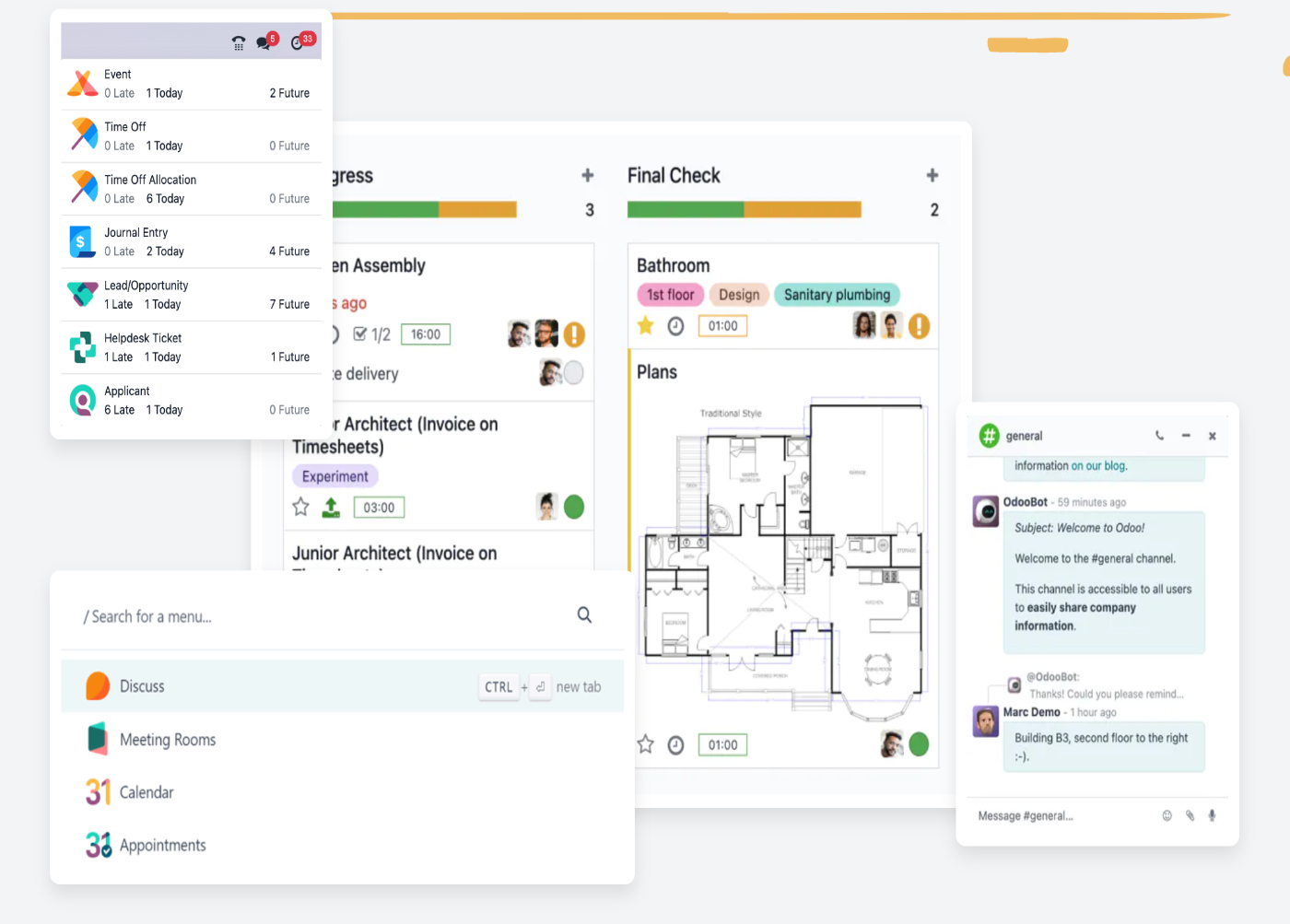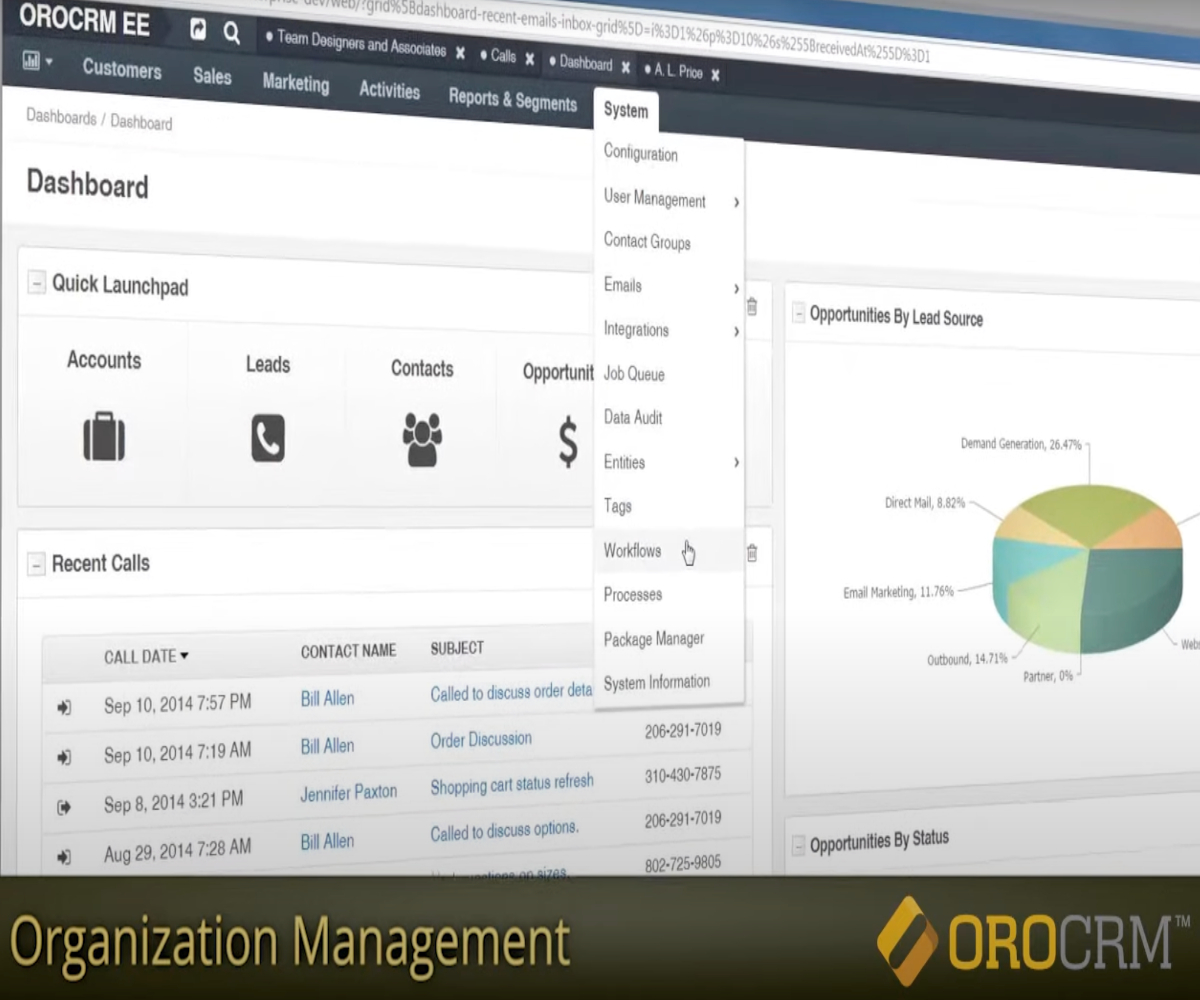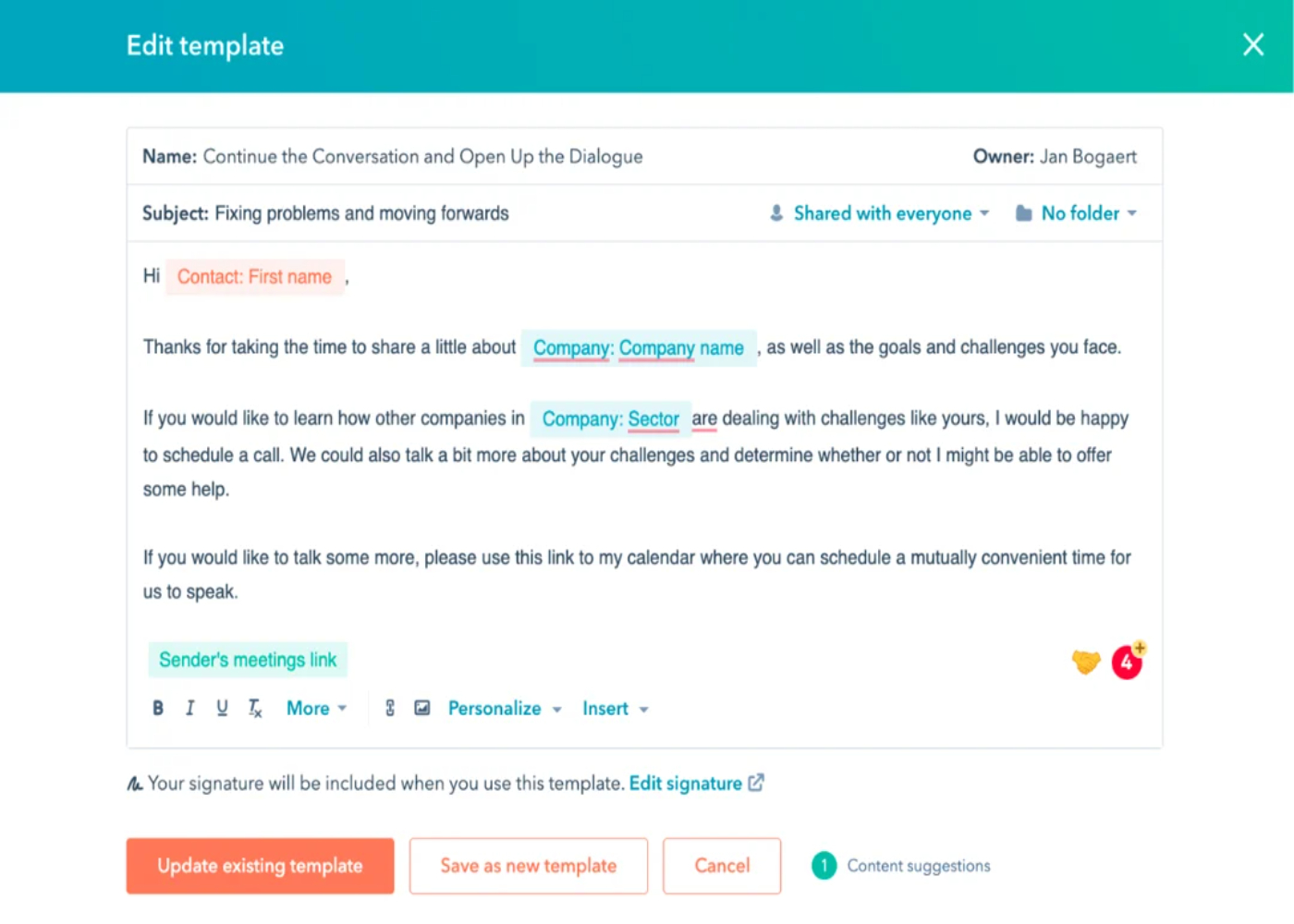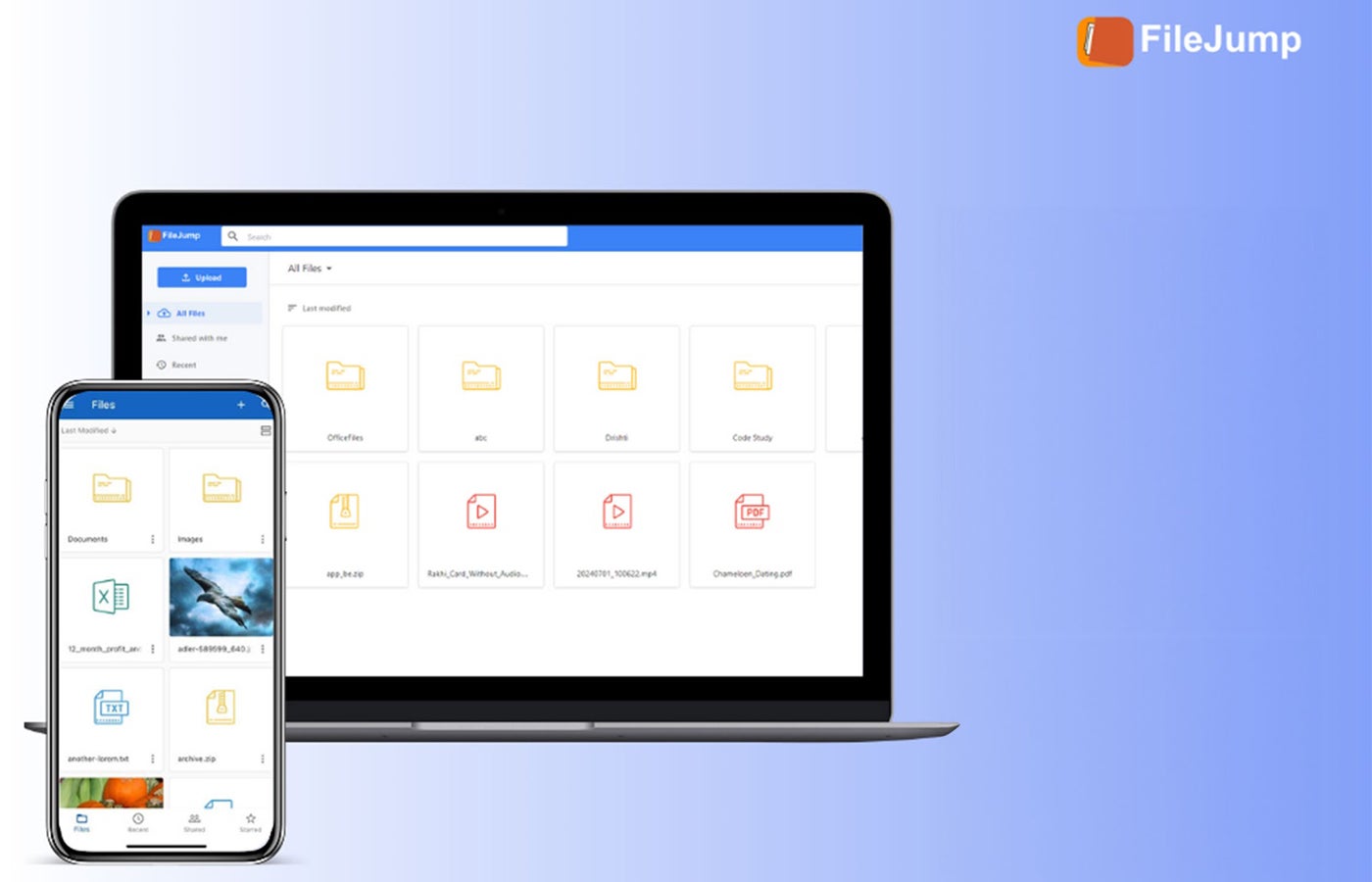- Best overall open source CRM: SuiteCRM
- Best for integrating native and third-party applications: Odoo
- Best Open Source CRM Supporting E-Commerce: OroCRM
- Best open source CMS tools: HubSpot CRM
- Best open source CRM for international clients: YetiForce
Open source CRM software is any CRM with the specific functionality of allowing its source code to be publicly available so that any user can make changes or customizations. Organizations that choose open source software over closed source are typically capable of high-tech coding and seek the benefits of being able to customize their platform and solution at an affordable price.
1
CRM
Employees by company size
Micro (0-49), Small (50-249), Medium (250-999), Large (1000-4999), Business (5000+)
Any size of company
Any size of company
Characteristics
Calendar, collaboration tools, contact management and more
2
HubSpotCRM
Employees by company size
Micro (0-49), Small (50-249), Medium (250-999), Large (1000-4999), Business (5000+)
Micro (0-49 employees), small (50-249 employees), medium (250-999 employees), large (1000-4999 employees)
Micro, Small, Medium, Large
Comparison of the best open source CRM software
Open source CRMs are downloadable software that users then categorize and code themselves to meet their specific needs. These options we compare below also offer hosted CRMs that are subscription-based, out-of-the-box, and come with the features and tools pre-built into the platform. The best open source CRM offers modern APIs for coding, great scalability, and pre-built, customizable modules for managing pipelines and data.
| Software | Pipeline management | Mobile app | Cloud-based platform | Built-in reporting tool | Open source pricing* |
|---|---|---|---|---|---|
| SuiteCRM | Yeah | Yeah | No | Yeah | Free |
| odoo | Yeah | Yeah | Yeah | Yeah | Free |
| OroCRM | Yeah | No | Yeah | Yeah | Free |
| HubSpotCRM | Yeah | Yeah | Yeah | Yeah | Free |
| Yeti Force | Yeah | Yeah | Yeah | Limited | Free with add-ons |
Cost to download the open source platform*
SEE: For more information, check out our full CRM feature comparison.
SuiteCRM – Best Overall Open Source CRM
SuiteCRM is a great all-in-one open source CRM that prioritizes giving users a 360-degree view of their customers and their business as a whole. SuiteCRM supports a variety of features that can be customized with sales, case management, workflow, and configuration tools. SuiteCRM's open source capabilities ensure that users with technical expertise and community support can adapt its features to develop complete end-to-end sales processes.
Prices
- Open source community level: Free to download.
- Insured Suite: Hosting platform, contact for quote.
Characteristics
- Configuration study: Add new fields, customize layouts, and create new modules with system administration tools.
- Activity management: Automate and track customer touchpoints with its call, meeting, task, and note modules.
- Report module: Create, automatically generate and schedule reports based on real-time data from any module within the CRM (Figure A).

Advantages |
Cons |
|---|---|
| 30-day free trial. | Users report that UI/UX is outdated. |
| Software demonstration. | There is no customer service by phone. |
| Experience in multiple industries. | Users report billing errors. |
Odoo: best for integrating native and third-party applications

Image: Odoo
Odoo open source development offers a wide range of applications that can be integrated into a single tool. This can be cost-effective, especially because organizations do not need to purchase multiple platforms that are not connected. The free version of Odoo only allows one app for unlimited users, which can be limiting depending on what you need to handle with a CRM. Instead, the standard and custom levels allow access to thousands of applications for finance, sales, marketing, human resources, inventory, and productivity tracking.
Prices
- Community open source: Free to download.
- Business accommodation: Contact for quote.
- One level of application: One app download for unlimited users.
- Standard level: $24.90 per user per month for unlimited apps through Odoo online.
- Custom level: $37.40 per user per month for unlimited apps through Odoo online, on-premise.
Characteristics
- Lead Mining: Generate new leads that match an ideal customer profile and combine them into an Odoo database.
- Assignment rules: Define unique rules and triggers to assign and route leads to specific sales teams or individual representatives.
- 360 degree visibility: Find out what pages prospects visited on a website, what emails or meetings they participated in, and more (Figure B).

Advantages |
Cons |
|---|---|
| Free Trial. | Limited reporting and analysis. |
| Unlimited hosting and maintenance for paid plans. | User reports of poor customer service. |
| Community resources and tutorials. | Limited documentation. |
OroCRM – Best Open Source CRM Supporting E-Commerce

OroCRM's open source offering makes Oro products more accessible and innovative, especially for B2B eCommerce organizations. This solution helps organizations move online for the first time to support physical locations with a digital channel while maintaining operations by tracking all sales activities. Industries such as automotive, industrial parts, and medical supplies can use this open source platform to synchronize digital, marketing, sales, and IT teams in a single hub.
Prices
- Open source: free download.
- OroCloud Hosting: Contact for quote.
Characteristics
- Monetary, Frequency, and Recency Analysis: Identify top customers based on how recently, how often, and how much they spend on purchases.
- Account Management – View and manage all accounts, interactions and information from one dashboard.
- Performance Dashboards: Track individual and team performance on segmented campaigns or opportunity close rates with workflows (Figure C).

Advantages |
Cons |
|---|---|
| User-driven security. | More than 25 administrator users have an additional cost. |
| Offer a free demo. | No mobile app. |
| Integrations. | User reports of a learning curve. |
Characteristics
- Lead prospecting: Manage inbound leads and sales opportunities from a custom prospecting workspace.
- HubSpot AI: Use AI-powered tools to create sales and marketing materials.
- Email templates: Create templates from effective sales emails to share with a team (Figure D).

Advantages |
Cons |
|---|---|
| Variety of integrations. | Higher and more expensive support levels. |
| Reports from a simple user interface. | No free trial. |
| 24/7 support via chat. | Add-ons start at $25 per month. |
SEE: For a CRM similar to HubSpot, check out the best business CRM software.
YetiForce: the best open source CRM for international clients

Yetiforce offers a simple 5-step process to download and register your open source CRM. This includes access to documentation on how to properly configure the functionalities available on the system, as well as granting access and language settings. Yetiforce comes with 80 ready-to-use modules that can be freely configured in its modern API. Its sales, marketing, support and logistics tools support users around the world and in more than 35 languages.
Prices
- Open source: Free download with paid plugins.
Characteristics
- Online store: Store all data and analysis at once in a central system controlled by configurations.
- International entry: Access account or customer data online from anywhere in the world.
- Customer Portal: Exchange data and information directly from a fully integrated portal (Figure E).

Advantages |
Cons |
|---|---|
| More than 300 implementations. | Limited customer service. |
| More than 90 configuration panels. | No lead scoring. |
| According to OWASP ASVS. | No native app. |
How do I choose the best open source CRM software for my business?
Now that you know some of the best open source CRMs on the market to date, their key features, pricing, and more, it's time to start looking into which software would best suit your organization. All of the CRMs on this list offer a free trial and have sales teams to guide you through the purchasing and onboarding process.
Below are some questions to consider when selecting an open source CRM:
- What industrial specialization in the market does the software have?
- Do your services match your allocated budget for an open source CRM?
- Does your organization have the technical expertise for your open source software?
SEE: To learn more about the benefits of CRM and how to implement the platform, check out our article on how a CRM can help your small business grow.
Review methodology
We review and score each open source software based on an internal rubric with criteria and subcategories of standard CRM features and offerings. Using that rubric and algorithm to determine an overall star rating, we determined the ideal use case for each CRM software.
Below is a breakdown of the scoring criteria we follow:
- Cost: It weighted 25% of the total score.
- Main features: It weighted 25% of the total score.
- Customizations: It weighted 15% of the total score.
- Integrations: It weighted 15% of the total score.
- Easy to use: It weighted 10% of the total score.
- Customer Support: It weighted 10% of the total score.












